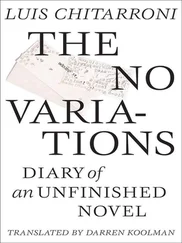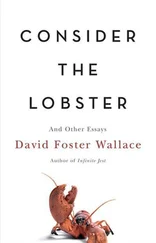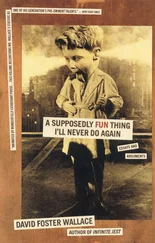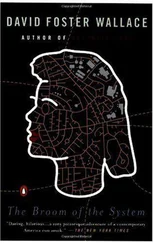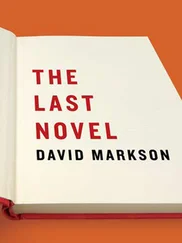He used the white A/V screen for transparencies — unlike the Intro prof, he didn’t write things in chalk on the blackboard — and when he put the first transparency on the overhead projector and the room’s lights dimmed, his face was lit from below like a cabaret performer’s, which made its hollow intensity and facial structure even more pronounced. I remember there was a sort of electric coolness in my head. The diagram projected behind him was an upward curve with bar graphs extending below its various sections, the curve steep near the origin and flattening somewhat at the apex. It looked a bit like a wave preparing to break. The diagram was unlabeled, and only later would I recognize it as representing the progressive marginal rate schedules for the 1976 federal income tax. I felt unusually aware and alert, but in a different way from doubling or Cylert. There were also several curves and equations and glossed citations from USTC § 62, many of whose subsections had to do with complex regulations about the distinction between deductions ‘for’ adjusted gross income versus deductions ‘from’ AGI, which the substitute said formed the basis of practically every truly effective modern individual tax-planning strategy. Here — though I realized this only later, after recruitment — he was referring to structuring one’s affairs so that as many deductions as possible were deductions ‘for’ adjusted gross income, as everything from the Standard Deduction to medical-expense deductions are designed with AGI-based floors ( floor meaning, for example, that as only those medical expenses in excess of 3 percent of AGI were deductible, it was obviously to the advantage of the average taxpayer to render his AGI — known also sometimes as his ‘31,’ as it was then on Line 31 of the Individual 1040 that one entered AGI — just as low as possible).
Admittedly, though, however alert and aware I felt, I was probably more aware of the effects the lecture seemed to be having on me than of the lecture itself, much of which was over my head — understandably, as I hadn’t even finished Intro Accounting yet — and yet was almost impossible to look away from or not feel stirred by. This was partly due to the substitute’s presentation, which was rapid, organized, undramatic, and dry in the way of people who know that what they are saying is too valuable in its own right to cheapen with concern about delivery or ‘connecting’ with the students. In other words, the presentation had a kind of zealous integrity that manifested not as style but as the lack of it. I felt that I suddenly, for the first time, understood the meaning of my father’s term ‘no-nonsense,’ and why it was a term of approval.
I remember I did notice that the class’s students all took notes, which in accounting classes means that one has to internalize and write down one fact or point from the professor while at the same time still listening intently enough to the next point to be able to write it down next, as well, which requires a kind of intensively split concentration that I did not get the hang of until well into T&A in Indianapolis the following year. It was a totally different type of note-taking from the kind in humanities classes, which involved mainly doodles and broad, abstract themes and ideas. Also, the Advanced Tax students had multiple pencils lined up on their desks, all of which were extremely sharp. I realized that I almost never had a sharp pencil at hand when I really wanted one; I had never taken the trouble to keep them organized and sharpened. The only touch of what might have been dry wit in the lecture was occasional statements and quotes that the substitute interpolated into the graphs by sometimes writing them on the current transparency, projecting them onto the A/V screen without comment and then pausing while everyone copied them all down as quickly as possible before he changed to the next transparency. I still remember one such example—‘ What we now need to discover in the social realm is the moral equivalent of war,’ with the only written attribution at the end being ‘James,’ which, at the time, I believed referred to the biblical apostle James, for obvious reasons — although he said nothing to explain or reinforce the quote while the six straight rows of students — some of whose glasses reflected the projection’s light in ways that gave them an openly robotic, conformist aspect, with twin squares of white light where their eyes should have been, I remember being struck by — dutifully transcribed it. Or one other example, which was preprinted on its own transparency and credited to Karl Marx, the well-known father of Marxism—
‘In Communist society it will be possible for me to do one thing today and another tomorrow, to hunt in the morning, fish in the afternoon, rear cattle in the evening, criticize after dinner, just as I please’—
about which the substitute’s only gloss was the dry statement ‘Emphasis added.’
What I’m trying to say is that it was ultimately much more like the evangelist girlfriend with the boots’ own experience than I could have ever admitted at the time. Obviously, through just the 2,235-word story of a memory, I could never convince anybody else that the innate, objective quality of the substitute’s lecture would also have glued anybody else to their seat and made them forget about their final review in American Political Thought, or of the way that much of what the Catholic father (I thought) said or projected seemed somehow aimed directly at me. I can, though, at least help explain why I was so ‘primed’ for experiencing it this way, as I’d already had a kind of foretaste or temblor of just this experience shortly before the mistake in final-review classes’ rooms occurred, though it was only later, in retrospect, that I understood it — meaning the experience — as such.
I can clearly remember that a few days earlier — meaning on the Monday of the last week of regular classes for the Fall ’78 term — I was sitting there all slumped and unmotivated on the old yellow corduroy couch in our DePaul dorm room in the middle of the afternoon. I was by myself, wearing nylon warm-up pants and a black Pink Floyd tee shirt, trying to spin a soccer ball on my finger, and watching the CBS soap opera As the World Turns on the room’s little black-and-white Zenith — not Obetrolling or blowing off anything in particular but essentially still just being an unmotivated lump. There was certainly always reading and studying for finals I could do, but I was being a wastoid. I was slouched way down on my tailbone on the couch, so that everything on the little TV was framed by my knees, and watching As the World Turns while spinning the soccer ball in an idle, undirected way. It was technically the roommate’s television, but he was a serious pre-med student and always at the science library, though he had taken the trouble to rig a specially folded wire coat hanger to take the place of the Zenith’s missing antenna, which was the only reason it got any reception at all. As the World Turns ran on CBS from 1:00 to 2:00 in the afternoon. This was something I still did too much during that final year, sitting there wasting time in front of the little Zenith, and several times I’d gotten passively sucked into CBS afternoon soap operas, where the shows’ characters all spoke and emoted broadly and talked to one another without any hitch or pause in intensity whatsoever, it seemed, so that there was something almost hypnotic about the whole thing, especially as I had no classes on Monday or Friday and it was all too easy to sit there and get sucked in. I can remember that many of the other DePaul students that year were hooked on the ABC soap opera General Hospital, gathering in great avid, hooting packs to watch it — with their hip alibi being that they were actually making fun of the show — but, for reasons that probably had to do with the Zenith’s spotty reception, I was more of a CBS habitué that year, particularly As the World Turns and Guiding Light, which followed As the World Turns at 2:00 P.M. on weekdays and was actually in some ways an even more hypnotic show.
Читать дальше

